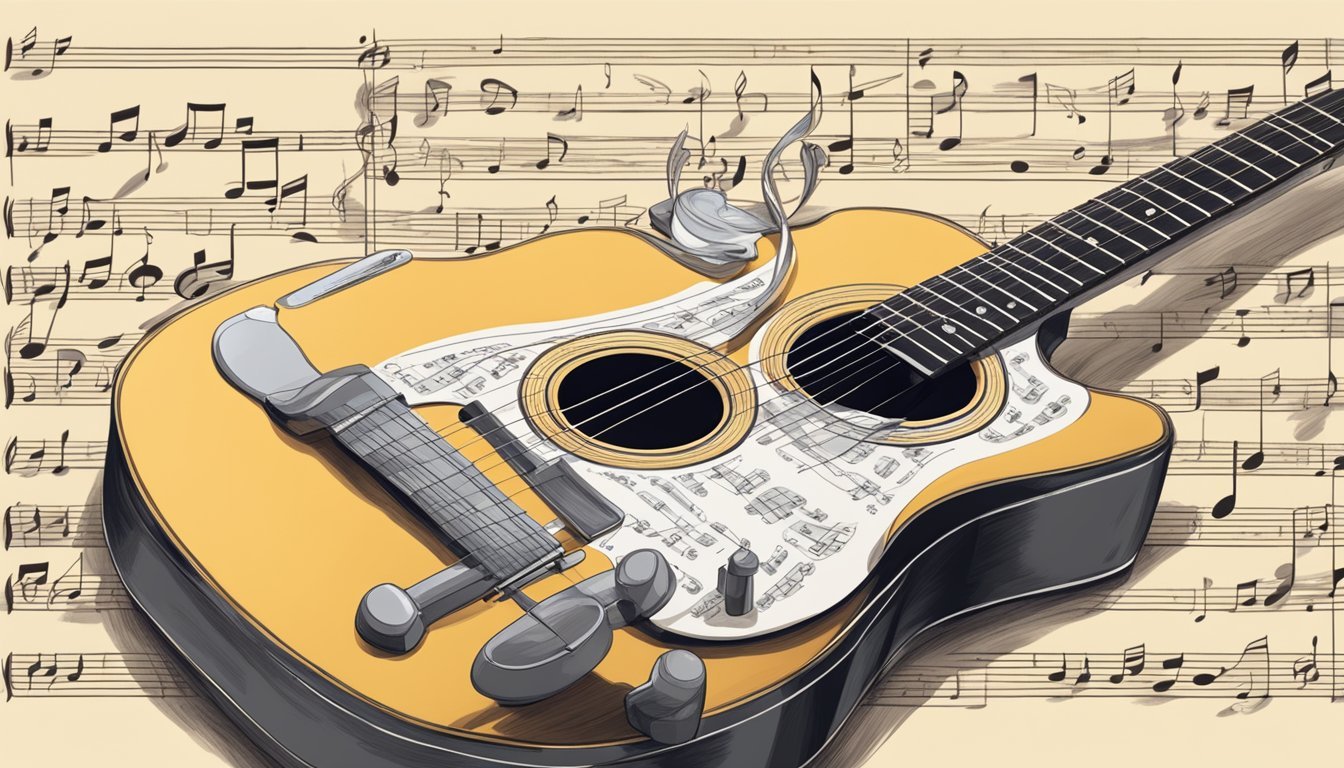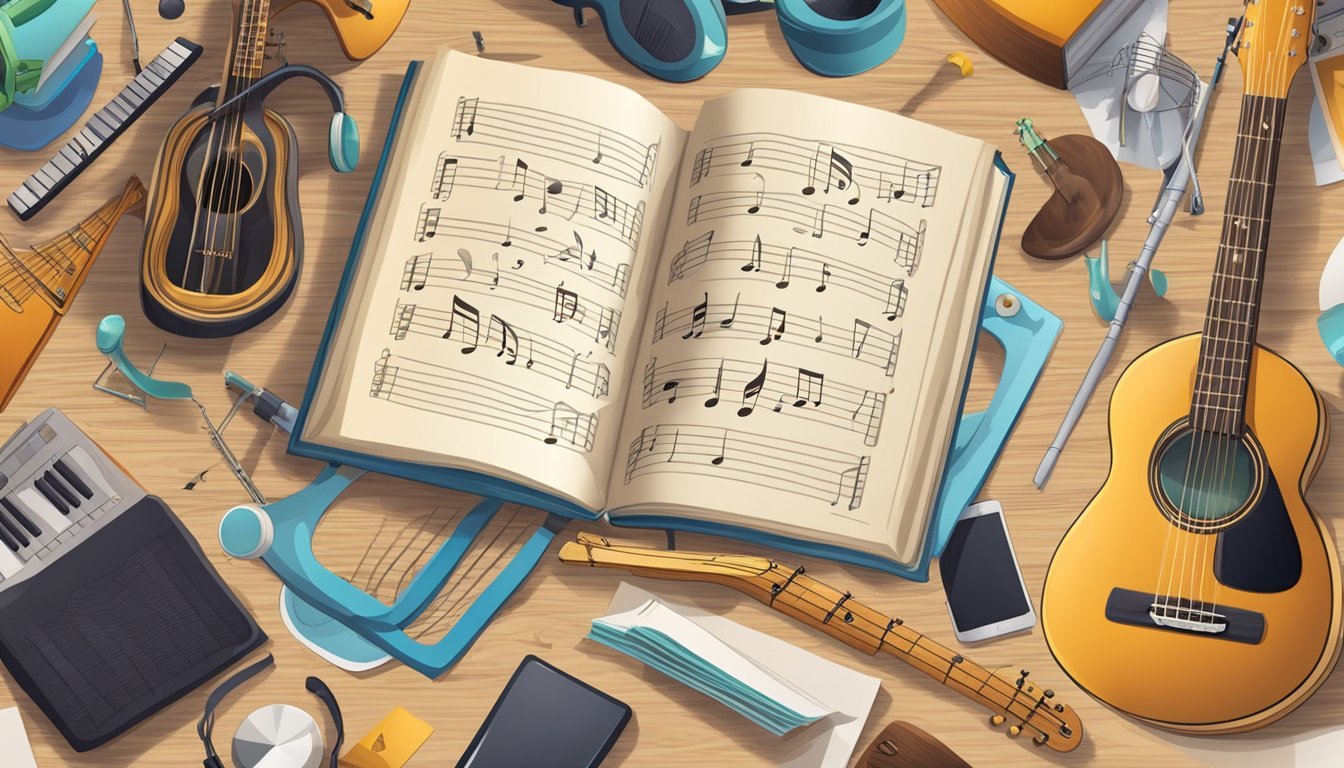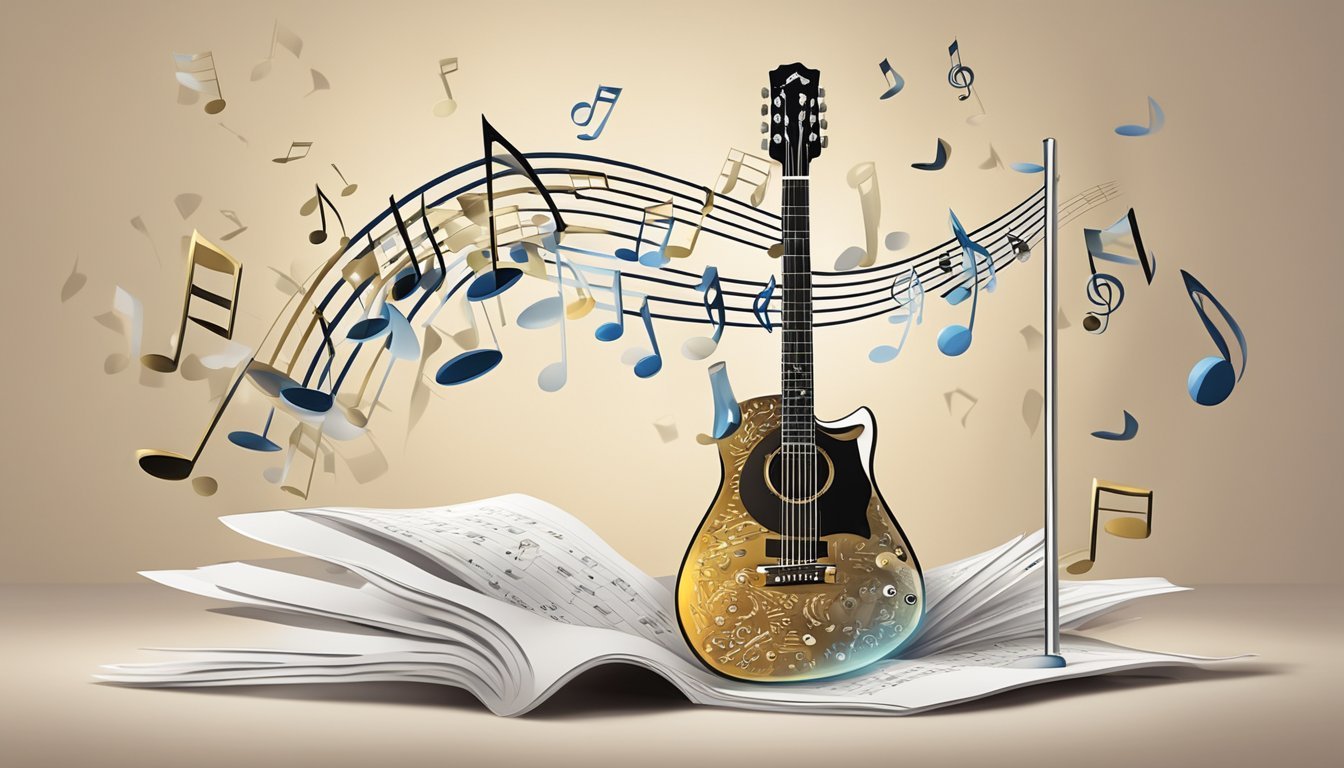Learning to read music notes for guitar can seem tricky at first, but it’s a skill that opens up a world of possibilities. Understanding the basics of sheet music and guitar notation can help you play your favorite songs with confidence. Whether you’re just starting your guitar journey or looking to improve your skills, knowing how to read music can take your playing to the next level.

You don’t need to be a music theory expert to get started.
With a little practice, you’ll learn how to navigate the fretboard while reading guitar sheet music.
This will allow you to play with other musicians and make learning new songs much easier.
The more you immerse yourself in reading music, the more enjoyable your playing experience will become.
Ready to dive in? Let’s explore the essential elements you need to start reading music notes for guitar and see how simple it can really be.
Key Takeaways
- You can learn to read music notes by grasping the basics of sheet music.
- Understanding guitar notation helps with navigating the fretboard.
- Regular practice makes reading music easier and more enjoyable.
Understanding the Basics of Sheet Music
When you start reading guitar sheet music, it’s important to know some basic concepts.
This includes understanding the staff, notes, rests, and how timing works.
Each part plays a role in helping you read music accurately.
Let’s break these down.
The Staff and Clefs
The staff is made up of five lines and four spaces where notes are placed.
Notes can sit on any line or space, showing their pitch.
Clefs tell you which notes correspond to the lines and spaces.
For guitar music, you mainly use the treble clef, which is used for higher pitches.
If you ever see the bass clef, it’s for lower sounds, typically used for piano or bass parts.
Understanding the difference helps you pick the right notes as you read.
Notes and Rests
Notes represent sounds, while rests indicate silence.
Each note has a specific symbol that shows how long it should be played.
Common note types include:
- Whole note: Four beats
- Half note: Two beats
- Quarter note: One beat
- Eighth note: Half a beat
- Sixteenth note: A quarter of a beat
Rests share similar values.
Knowing these helps you keep time while playing.
For example, a quarter rest lasts one beat, just like a quarter note.
Duration and Timing
Duration refers to how long each note should sound.
Timing is about when to play them.
You’ll see notes arranged in bars, also called measures.
Each bar groups beats and helps keep your music organized.
The time signature at the beginning of the staff tells you how many beats are in each measure.
For example, 4/4 time means there are four beats per measure.
Keeping track of your timing as you play can make a huge difference in your music.
By knowing these basics, you’ll be well on your way to reading guitar music confidently!
Navigating the Fretboard and Guitar Notation
Understanding the guitar fretboard and how to read music notation can make playing much easier.
You will learn the basic layout of the fretboard, how to read standard notation and tablature, and how musical keys relate to guitar tuning.
Fretboard Basics
The guitar fretboard has six strings, and each string is tuned to specific notes in standard tuning.
The strings from the thickest to the thinnest are E, A, D, G, B, and E.
Each fret represents a half-step or semitone.
For example, if you play the open E string and press down on the first fret, you play an F note.
To find natural notes, remember this sequence: C, D, E, F, G, A, B. After B, it starts over at C. Sharps and flats come into play between these notes.
For instance, the note between E and F is E♯ (F), and the note between B and C is B♯ (C).
Reading Standard Notation and Tablature
Standard notation uses musical staff to show notes.
For guitar, you might see notes placed on lines and spaces representing the pitch.
Each note corresponds to a fret and string on your guitar.
Guitar tablature, or tab, is more straightforward.
It’s a visual representation of the fretboard.
Each line represents a string, and numbers tell you which fret to press.
For example, a “3” on the bottom line means to press the third fret of the E string.
Chord diagrams are also useful.
They show which fingers to use and where to place them for each chord.
You’ll see circles for the fingers and numbers for the frets.
Musical Keys and Guitar Tuning
Every piece of music is in a specific musical key that defines the scale used.
Common keys include C, G, D, and A. Knowing the key helps you understand what chords and notes fit together nicely.
In standard tuning, the E minor scale is a good starting point for beginners.
It only uses natural notes, plus F♯ and C♯.
When tuning your guitar, ensure each string is at the right pitch.
You can use a tuner or pitch pipes.
Once tuned, your guitar is ready for playing in any key, making it easier to follow along with songs and other musicians.
Dynamics and Expanding Your Knowledge

Understanding dynamics in music is essential for adding expression to your guitar playing.
By expanding your knowledge of sheet music symbols, chords, and scales, you’ll enhance your ability to read and interpret music more effectively.
Understanding Sheet Music Symbols
When you look at sheet music, you’ll see various symbols that guide your playing. Notes on the staff represent different pitches, while ledger lines extend those pitches higher or lower.
Pay attention to the key signature at the beginning.
It tells you which notes are sharp or flat throughout the piece.
You might encounter accidentals, which alter the pitch of a note temporarily.
Also, time signatures indicate how many beats are in each measure, letting you keep rhythm while you play.
Knowing how to identify these symbols will help you grasp melodies, harmonies, and rhythms in your music.
Exploring Chords and Scales
Chords and scales are the building blocks of music.
For example, the C major chord consists of the notes C, E, and G. Understanding how chords work allows you to accompany melodies or create your own.
On the other hand, scales like the C major scale (C, D, E, F, G, A, B) help you understand note relationships and finger positioning on the fretboard.
You can practice playing scales up and down to improve your technique and finger strength.
Recognizing the relationship between chords and scales will help you become a more versatile player.
Practical Application Through Exercises
To make what you’ve learned stick, engage in practical exercises.
Try playing melodies that incorporate different note durations, like quarter notes and eighth notes.
Focus on how slurs and ties can affect the feel of a piece.
Consider practicing with backing tracks to apply chords and scales in a musical context.
This will enhance your ability to interpret dynamics and make your playing more expressive.
Remember, practice makes perfect, so keep experimenting with different musical pieces to build your skills.
Frequently Asked Questions

Reading music notes for guitar can seem tricky at first, but it gets easier with practice.
Here are some common questions that beginners have about reading sheet music and guitar tabs.
One of the primary challenges for new guitarists is understanding the different symbols and notations used in sheet music and tabs.
Many beginners also seek guidance on how to read guitar chords, which is essential for playing songs effectively.
With time, patience, and consistent practice, you’ll find that deciphering music becomes a more intuitive process, allowing you to focus more on enjoying the music you create.
What are the basics of reading guitar sheet music for a beginner?
For beginners, the basics include understanding the staff, which has five lines and four spaces.
Each line and space represents a different note.
The treble clef is used for guitar music, and knowing the notes on the lines (E, G, B, D, F) and spaces (F, A, C, E) is essential.
Can you explain how to interpret guitar tabs as opposed to traditional music notes?
Guitar tabs are a simplified way to read music.
Instead of a staff, you see six lines representing the strings.
Numbers on those lines tell you where to place your fingers.
Unlike traditional music notes, tabs do not show note duration but focus more on the sequence of notes to play.
How do you identify notes and chords on guitar sheet music?
To identify notes, look at their position on the staff.
Each position corresponds to a specific note on the guitar.
Chords are shown as stacked notes, indicating that you play them simultaneously.
Familiarizing yourself with common chords will help you recognize them quickly on sheet music.
Are there any tricks to understanding guitar notes for someone just starting out?
One trick is to use mnemonics to remember note names.
For example, for the lines in the treble clef, you might remember “Every Good Boy Deserves Food.” Practice by playing simple pieces to connect the written notes with the sounds you produce on the guitar.
Do all guitarists need to know how to read sheet music, or can you play without it?
Not all guitarists need to read sheet music.
Many guitarists learn by ear or use tabs, which are easier to follow.
However, knowing how to read music can deepen your understanding and open up more opportunities for playing.
What are the first steps in learning to read sheet music specifically for guitar?
Start by learning the notes of the open strings: E, A, D, G, B, and e.
Familiarize yourself with the staff and practice identifying notes on it.
Use simple songs to apply what you learn and build your confidence with reading as you play.

